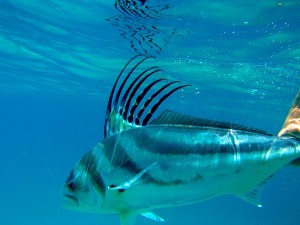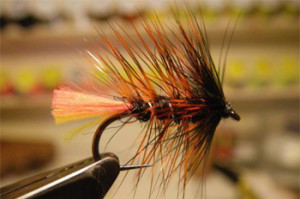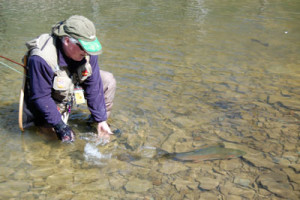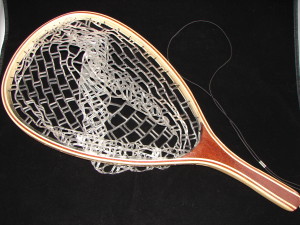 We are catch and release guys. We like fishing, we like catching, we enjoy a good picture or two, and we like letting them go.
We are catch and release guys. We like fishing, we like catching, we enjoy a good picture or two, and we like letting them go.
Let ’em go, let ’em grow—as they say.
Maybe you’re a catch and release guy too. We hope so (if not, that’s cool too, just be responsible), and we want to give you a few tips to make sure the fish you are releasing live.
There’s nothing worse than putting a fish back and seeing him swim off half-sideways struggling to find gravity’s pull.
With these tips, more of your fish will go on to live productive lives as members of fish society, telling war stories to their grandkids.
Tip 1: Make It Easy
Have you ever seen someone fishing from a bridge suspended 25 feet above water? I have.
Not being the shy type, I walked up and asked how things were going. They were catching fish, and I assumed harvesting them. They were not. They were releasing their fish.
Unfortunately, those fish had very little chance of survival. After being hauled up 25 feet, they were dropped 25 feet back to the water. That’s not unlike jumping 200 feet out of a helicopter into some water—not fun.
Make it easy to release your fish. Fishing from the shore? Be near enough to the water that you can reach in and grab the fish, then subsequently reach in and let her go. If you are fishing from a boat, this should be very easy—just make sure you get as near the water as possible, and don’t toss a fish into your trolling motor.
Tip 2: Fight Only As Long As Necessary
There is a trend, especially in fly fishing, to use very lightweight tackle to go after big fish.
To handle something like this, you have to really finesse the fight. You also have to draw it out unnecessarily long.
If I decide to fish for 20 inch browns (aka Moby Dick), but decide to use a 3 weight and 2 pound test leader and tippet, I have no choice but to extend that fight should I be lucky enough to hook up.
That is very detrimental to the health of the fish.
Better to equip myself with the necessary gear for the fish I’m after. Sure, the fight probably won’t be quite as epic, but it will be more likely to leave the fish in good shape.
Tip 3: To Barb Or Not To Barb
In fly fishing, it’s pretty common practice to smash your barbs down.
Do you lose more fish? Probably. Do you still bring plenty to hand? Absolutely.
When you have a barbed hook, you have a sharp implement that is designed to enter flesh and bone easily, but not come out. That means when you need to remove your hook, it’s going to cause some serious tissue trauma.
This isn’t likely to be very important if you are bass fishing, but if you are fishing for trout or panfish, smash those barbs and you will really be doing your fishery a favor.
Now, if you don’t feel comfortable with this strategy, and you are still going to use barbs, then you should…
Tip 4: Use The Right Tool For The Job
I keep a pair of forceps on a springy cable on the outside of my fly vest.
Why? Because fingers are not designed to pull hooks from the mouths of trout.
I hate seeing folks digging hooks out of the mouth or throat of a trout like their digging up pirate treasure. Trout are delicate creatures, and pulling a hook out with the blunt instruments on the ends of your hands is not conducive to their survival.
You have so many different options available to you (probably enough for a future post) that there is no excuse. Get the right tool for the job and you will release more fish successfully.
Tip 5: Get Wet
I’ll admit right away, this tip kind of sucks in cold water. I still do it though.
When your dry hands meet the slimy skin of a fish, bad things happen. You remove some of that vital slime covering, which is important to the health and survival of a fish. Specifically, it helps reduce the chance of disease and parasites.
Dipping your hands into the water will reduce the amount of this covering that you pull off.
Even better than getting your hands wet though…
Tip 6: Keep The Fish Wet
Hey, we love a grip and grin iPhone shot of our latest catch just as much as you.
But do you really have to do it with every fish?
If you catch a fish that is not going to be Insta famous, why not just keep her in the water while you release her?
If you’ve followed a few of the other tips above, it should be relatively easy to remove the hook even with the fish still in the water. Just grab whichever tool you prefer, get a proper hold on the fish, and remove the hook underneath the surface.
Off the fish swims, ready to fight another day.
Tip 7: Choose The Right Net
Just like the myriad options you have when choosing rods, reels, and baits, you can get lost in all the nets on the market.
Some nets are specifically designed for catch and release.
These will typically be shallow, and the next constructed from some sort of rubber. The rubber, just like your wet hands, protects the slime coating on the fish better than the courser nets.
Click here to check out an affordable rubber net from Bass Pro.
Tip 8: Revive Your Fish
A life and death fight leaves one pretty tuckered out.
Even if you fought the fish well, and followed the tips above, you still want to make sure your fish is set up for success.
In a river, use the natural flow of water to your advantage. Face the fish upstream, have a gentle grip around the tail, and allow the fish to feel the water flowing. The water will run over the gills and deliver a blast of oxygen.
If you are in a lake, you will have to force the water over the gills. With the same grip on the tail, move your the fish back and forth allowing the water to travel through the mouth and gills. Continue the motion until the fish swims off.
Tip 9: When All Else Fails
Sometimes, you can do everything right, and it doesn’t matter. Sometimes the fish die, or sustain such heavy trauma they will die soon.
I’m not trying to be a Debbie Downer here, but it’s happened to us all.
When it does, we still have a chance to act responsibly.
When you see a fish is not going to make it, take him home. Harvest that fish, clean him, and eat him. Don’t be that guy that just lets a dead fish float along and eventually come to rest on some shore. Enjoy a meal and work on your release technique.
Catch and release fishing is really a wonderful thing. We get to hook up, have a fight, maybe a picture, and then return that fish to the water—a little smarter and a little more wary, but able to be caught another day.
Follow these tips and more of those fish will go on to grow into trophies.


